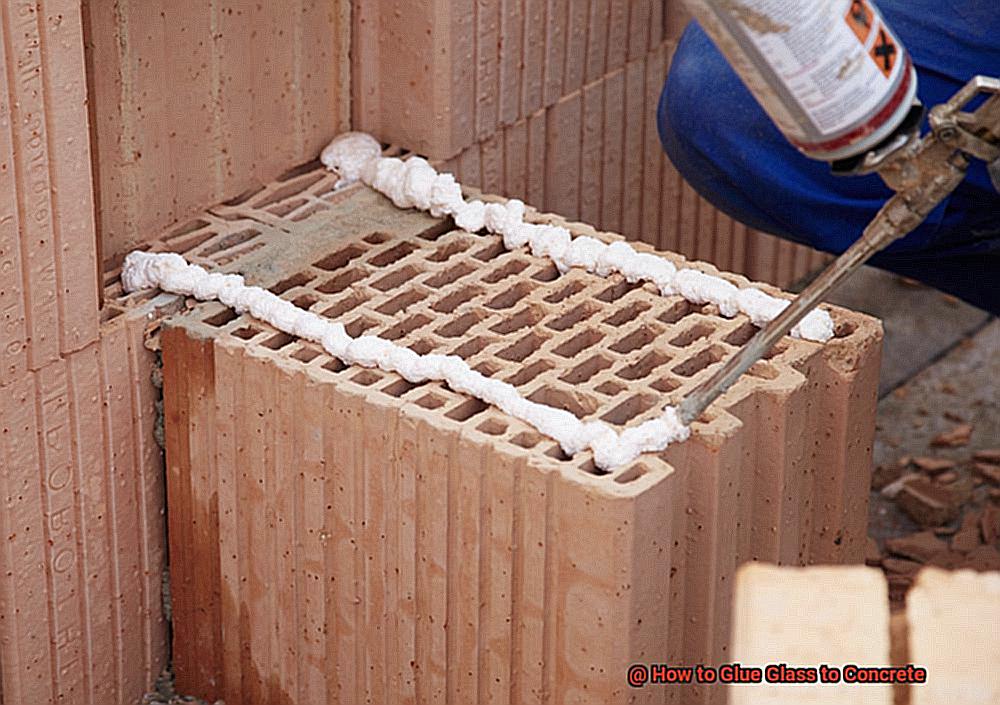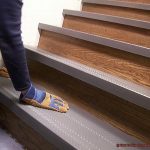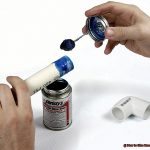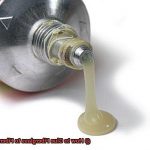Are you looking for a way to give your concrete surfaces a unique touch? Gluing glass to concrete is an easy and cost-effective way to do just that. With the right materials and a few simple steps, you can transform any boring concrete surface into something truly special.
Whether you want to create a unique display piece or add some sparkle and luster to your outdoor space, gluing glass to concrete is the answer! In this blog post, we’ll show you how it’s done. Plus, we’ll provide some helpful tips along the way.
So, if you’re ready to get started, let’s dive in!
What Glue Can You Use for Glass to Concrete?
Contents
- 1 What Glue Can You Use for Glass to Concrete?
- 2 How to Prepare Glass to Concrete Before Gluing
- 3 Will Gorilla Glue Stick to Concrete?
- 4 Advantages of Using Specialized Glues for Glass to Concrete
- 5 Best Practices for Applying the Glue
- 6 How Long Does it Take for the Glue to Set?
- 7 Tips and Tricks for Working with Glass and Concrete
- 8 Common Mistakes When Gluing Glass to Concrete
- 9 Conclusion
It’s strong, durable, and waterproof, making it an ideal choice for outdoor projects. Not only that, but it creates a strong and reliable bond between the two materials that will last for years to come.
Silicone adhesive is another great option if epoxy isn’t available. It has excellent adhesion properties and provides a flexible connection between the glass and concrete. However, it doesn’t form a bond as strong as epoxy does.
Construction adhesive can be used to glue glass to concrete, but it’s not as reliable or long-lasting as epoxy or silicone adhesive. In some cases, cyanoacrylate (superglue) can be used—though not for permanent bonds – but it should not be relied on in all situations.
How to Prepare Glass to Concrete Before Gluing
Preparing glass to be glued to concrete can be a tricky task, but with the right steps, you can make sure that your project is successful. Here are five steps to help you prepare glass for glueing to concrete:
Cleaning the Glass and Concrete Surfaces
Before attempting to glue glass to concrete, it is vital that both surfaces are free of dust, smoke, oil, or other debris. To do this, use a degreaser and a wire brush to clean any oil from the surfaces. Then dry them with a clean cloth. This will help ensure that the glue sticks properly.
Sanding Down the Concrete Surface
To ensure that the glue adheres well to the concrete surface, sand down any rough spots on it. This will result in a smooth surface for gluing and will help ensure that your bond holds strong. Use sandpaper or other abrasive material to sand down any rough areas on the concrete surface.
Applying an Epoxy Primer
Before gluing glass to concrete, apply an epoxy primer or sealer to the concrete surface in order to ensure better adhesion and prevent water loss and other environmental factors from interfering with your bond between glass and concrete. Spread out a thin layer of epoxy primer or sealer uniformly over both surfaces before proceeding with gluing them together.
Applying Glue
Now it’s time to apply glue! Use a high-strength adhesive designed specifically for bonding glass to concrete, such as epoxy or polyurethane glue. Make sure you spread out an even layer of glue on both surfaces before pressing them together and allowing them time to dry fully.
Drying Time
Finally, allow your glued glass and concrete surfaces to dry completely before using them in any application! Drying times vary greatly depending on what kind of adhesive you used and how thickly you applied it, so make sure you follow all instructions carefully when preparing your glued materials for use in any application!
Will Gorilla Glue Stick to Concrete?
Gorilla Glue is the perfect choice! This amazing glue is highly durable and can withstand extreme temperatures.
Plus, it’s easy to use and will create a secure bond between the glass and concrete. However, it’s essential that the surface of the concrete be clean and free of dust or debris for the glue to adhere properly.
To get even better results, use a primer or sealer before applying the Gorilla Glue.
Advantages of Using Specialized Glues for Glass to Concrete
When it comes to gluing glass to concrete projects, specialized glue is the way to go. These glues are specifically designed for the unique surfaces of concrete and glass, providing a strong bond that will last. They are also water-resistant and weatherproof, making them ideal for outdoor applications.
Applying specialized glue is much easier than traditional adhesives. It can be used on both vertical and horizontal surfaces with ease, ensuring a secure bond between the two materials.
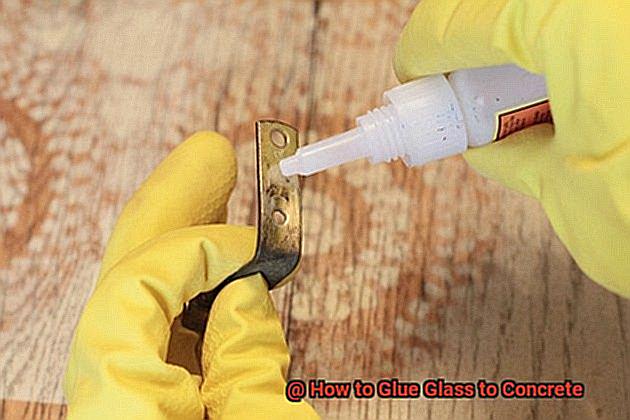
Plus, some specialized glues even come with a built-in primer that helps make sure your project lasts for years to come.
Best Practices for Applying the Glue
Here are some tips and tricks to make your project a success:
- First, make sure the surfaces of both materials are completely clean and free of dust, dirt, and debris. This will ensure that the glue sticks better. To remove any old glue residue from the concrete surface, use a putty knife or razor blade.
- Then, use a putty knife or brush to apply a thin layer of adhesive to both surfaces. Make sure you use enough glue for a strong bond between the two products. Allow the glue to dry completely before pressing the glass onto the concrete surface. Clamps will help hold it in place until it is firmly attached.
- Finally, allow 24 hours for the glue to cure before using or touching it.
How Long Does it Take for the Glue to Set?
Unfortunately, the answer isn’t as simple as you might think!
The amount of time it takes for the glue to set is contingent on the type of glue being used. On average, most glues will need at least 24 hours to fully set. However, some glues may take up to 48 hours before they are completely set.
It’s essential to read the instructions on the packaging of your glue carefully to determine how long it will take for your particular glue to set. Additionally, environmental conditions like temperature and humidity can influence how long it takes for the glue to set.
So if you’re working in a hot or humid environment, make sure to take this into consideration when planning your project timeline.
So, the amount of time it takes for a specific glue to set varies greatly depending on the type of glue and environmental conditions.
Tips and Tricks for Working with Glass and Concrete
Working with Glass and Concrete Safely
Working with glass and concrete can be a challenging task, so it’s important to take the necessary precautions to ensure your safety. Protective gear such as safety glasses, gloves, and a respirator mask should always be worn when handling these materials.
Long sleeves and pants should also be worn to protect your skin from cuts or scratches. Additionally, make sure you are always working in a well-ventilated area to avoid inhaling any glue or sealant fumes.
Preparing the Surface for Gluing
Before applying glue to glass or concrete surfaces, make sure that the surface is clean and free of any dirt or debris by wiping it down with a damp cloth.
Use a high-quality construction adhesive that is specifically designed for use on glass and concrete surfaces after the surface has been prepared. To test the bond strength before gluing your project together, press two pieces of glass together with adhesive in between them.
Securing the Bond
After applying adhesive, secure the glass by using clamps or weights to hold it in place while it dries.
This will help ensure that the bond between your glass and concrete surfaces is strong enough to last for years down the road. Depending on the type of glue used, drying time could take anywhere from 24 hours up to 48 hours or more; make sure you follow manufacturer instructions carefully during this process.
Finishing Touches
Once your job has dried completely, wipe away any excess glue or sealant residue using a damp cloth, and allow ample time for curing before handling or using your project again.
If you’re planning on painting over any glued surfaces, make sure all adhesives have cured completely first; otherwise, paint won’t adhere properly if there are traces of uncured glue on the surface of your project.
Troubleshooting Tips
If you’re having trouble getting your glass and concrete project just right, don’t worry!
There are plenty of resources online that can help you get back on track quickly and efficiently without sacrificing the quality of your workmanship.
Take some time to research different methods that may be more effective for your specific project’s needs – it could save you time (and money) in the long run!
Common Mistakes When Gluing Glass to Concrete
Gluing glass to concrete is a tricky task that requires precision and attention to detail. If done incorrectly, you could end up with a weak bond between the two materials. To ensure your project comes out exactly as you want it, here are some common mistakes to avoid when gluing glass to concrete.
First, make sure the surface is spotless and free of any dirt or dust. This will make sure that the glue adheres properly. Second, use enough glue so that it covers the entire area where the glass needs to adhere. This will guarantee a strong bond between your materials.
Give your glue enough time to dry and set correctly. Different types of glue require different drying times, so make sure you read the manufacturer’s instructions and give it ample time before moving on with your project.
Finally, use an adhesive that is suitable for both surfaces. Some glues won’t work for certain surfaces, such as concrete or glass, so make sure you read up on which type of adhesive is best for your particular project in order to get a solid bond between your materials.
Conclusion
Gluing glass to concrete is a great way to create something truly unique and special.
With the right materials, a few simple steps, and our helpful tips, you can give your outdoor space some sparkle or luster or create an eye-catching display piece.
We’ve discussed the best glues for this project, how to prepare both surfaces before gluing, and the benefits of using specialized glues.
Plus, we’ve shared best practices for applying them and common mistakes to avoid when dealing with glass and concrete.

